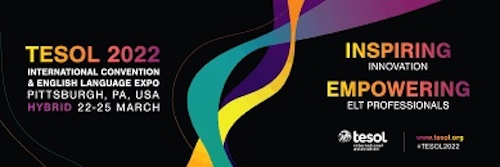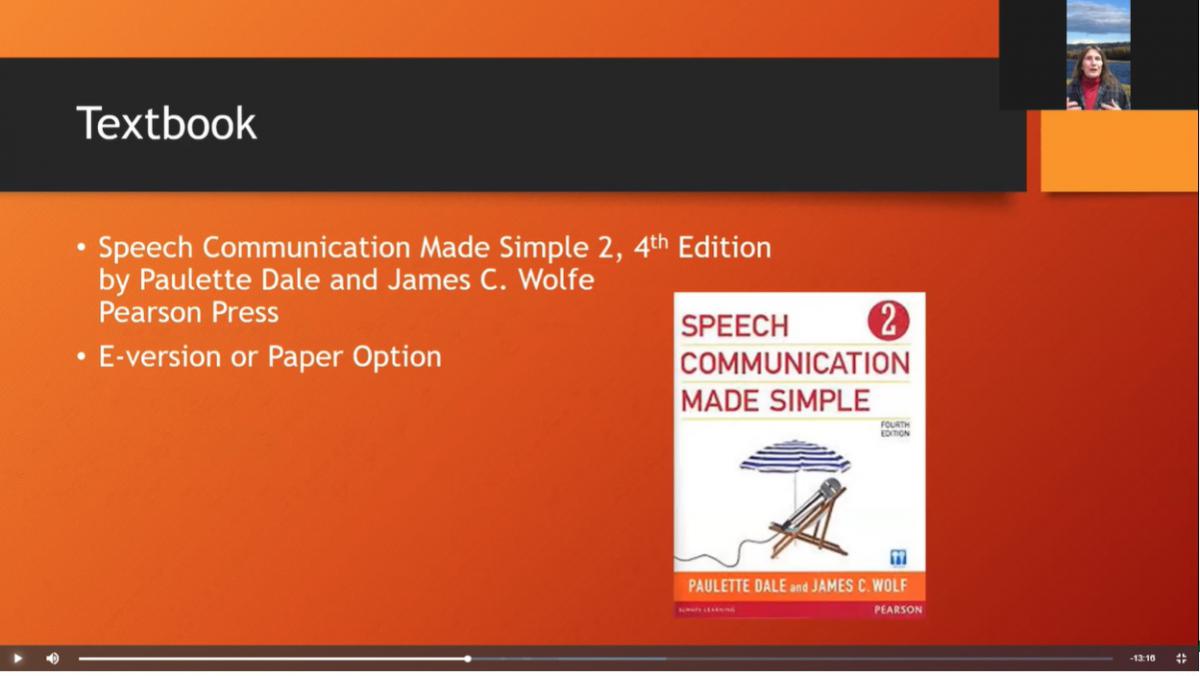 The U.S. Embassy TESOL 2022 Convention & English Language Expo Scholarship, Pittsburgh, PA, USA, Hybrid
The U.S. Embassy TESOL 2022 Convention & English Language Expo Scholarship, Pittsburgh, PA, USA, Hybrid
Public Speaking Virtually: Teaching Tips and Guides
Speaker: Susan Lindsay, M.Ed.
Portland State University
Session Summary
by
Itır Beğen Yılmaz
Susan Lindsey is a senior instructor at Portland State University where she has been teaching for the last 25 years in the Intensive English Language Program. Like most of us, she was pretty lost in March of 2020, when having left the university and headed home she received an email that said not to return because the university was closing and going entirely remote. She had no idea how to teach remotely. She had always been a face-to-face teacher, very interactive in the classroom, and had been very involved in presentations, group discussions, teaching reading, and helping people one on one. She had never been in a situation where she had to teach in a virtual setting and had no idea how to do it, and neither did her colleagues. There was a week to go before the online lessons were to start, but she had been doing it for a while now and in the course of that work, she noticed a few things that worked differently from teaching Public Speaking face to face. She believed that necessity indeed is the mother of invention. In that uncertainty and panic and rapid pivot, which we all went through that spring two years ago, her colleagues and herself were able to work together to move their face-to-face classes online. Here are some tips that helped her with the transition, and guided her through the process.
How it began and preparation:
- In March 2020, she had no training in teaching Public speaking in a virtual format. Feeling lost, going all remote, and with no idea how to teach remotely, like most of us, she learned how to use zoom in a short time.
Equipment:
- Laptop with a good graphics card (virtual backgrounds enable students to bring out their personality). The university provided loaner laptops
- Tablet/cell phone
- Multiple devices work best (the graphics card and the microphone in the iPad are much superior to the ones in laptops. Hosting the meeting with the laptop but using the tablet as multiple different ways of conducting the class. Use of cell phones to take the class on the road and move away from the static format. She used any way to infuse energy into this virtual environment. She highly recommends and encourages students to enter the class with multiple devices. That way, students can read an article on one device and use the chatbox to be able to attend the meeting and utilize a variety of different ways to express themselves.
- Headset and microphone: She recommends that these headsets and microphones are crucial in any kind of situation with background or any kind of noise distraction. She also advises checking that to ensure sound quality.
Textbook: One quality textbook she mentioned is, Speech Communication Made Simple, 4th edition by Paulette Dale and James C. Wolfe Pearson Press (E-version or Paper-option)
- An enormous number of activities, sample speeches, and sample tapes, very well broken down into the steps of researching, putting together, and organizing a quality informational speech and/or persuasive speech.
- It has exercises in pronunciation and idioms and enables the students to be able to check back and do a checklist at the end of each chapter to make sure that what they have done has really followed the instructions. She found that what worked best was to scan the pages of the textbook to be able to use them with the screen share option on zoom.
- The activities work well in the breakout rooms and make it simple for the students. The book also includes exercises for pronunciation.
- While the students are studying in the breakout rooms she uses her multiple devices and joins the rooms with them. She assigns herself as a student on her iPad and hosts the meeting on her laptop. That way, she is not abstractly off on her own, but she is actually in each room.
Assessment:
- Team approach: Try to build a community of students and have them be able to feel safe enough and comfortable to present together.
- Requirements: Outlines, Content (Research topic), Delivery, Peer evaluation, D2l (Learning management system), Canvas (app)
Teaching Tips:
- Keep student cameras on yet allow for downtime
- Allow for students to present in whatever way that works for them to a point
- Encourage them to stand up and use cue cards (Replicate a workplace, or further college studies)
- Time zone considerations
- Be overly animated and energetic in teaching due to the virtual barrier
- Use a variety of assignments and weekly speeches
- Build a community to help combat isolation
- Be flexible but firm on “speech days” but allow do-overs
- Take advantage of excellent online video resources (e.g., TED Talks and Toastmasters International) for review and discussion
- Use self-recording apps for student practice and submission (e.g. Flipgrid Video recording Educational from app www.flipgrid.com)
- Use chat, reactions, and hand signals for interactivity
- Breakout rooms for practice runs solo, or in pairs of small groups
Conclusion:
- Be bright, active, and animated
- Let the students be themselves
- Be firm, make sure they keep their cameras on
 Reflections:
Reflections:
When I was awarded the U.S. Embassy TESOL 2022 Convention & English Language Expo Scholarship in Pittsburgh, PA, USA, Hybrid, I was honored and thrilled to follow all the sessions, but my utmost interest was in executing the sessions on “Public Speaking”. In my experience, delivery in the virtual world is a challenge both for instructors and learners. I’m proud that in the School of Languages each and every one of my colleagues encourages students to be autonomous learners and this challenge turns into an opportunity. Not only the FDY English Public Speaking Program but other task groups such as the Collaborative Learning, English for Maths and Science (EMS), Staff English Course (SEC), Language and Culture Exchange Project, and Pronunciation Task Group focus on enhancing motivation, willingness to communicate and critical thinking. Likewise, in the FDY English Public Speaking Program, the goal is to overcome anxiety and facilitate real-life skills in academic life as well as professional contexts. Raising awareness in preparation, posture, and physicality and pleasing the audience, Public speaking is a well-earned gift of the School of Languages of Sabancı University.
In a nutshell, TESOL 2022 Convention included a refreshing series of ideas and discussions on our learner’s needs in the virtual world of the pandemic. In line with the teaching tips of Mrs. Lindsay, in the FDY English Public Speaking Program, we aim to engage our learners with the target objectives regarding communicative strategies, critical thinking, and analytical thinking skills. Once we harness their individual potential for social emancipation, they become aware of their mindset. Zoom also gives a path to an interactive student atmosphere with role-playing, and speaking games, and as instructors, we utilize a tailor-made approach towards their needs.

